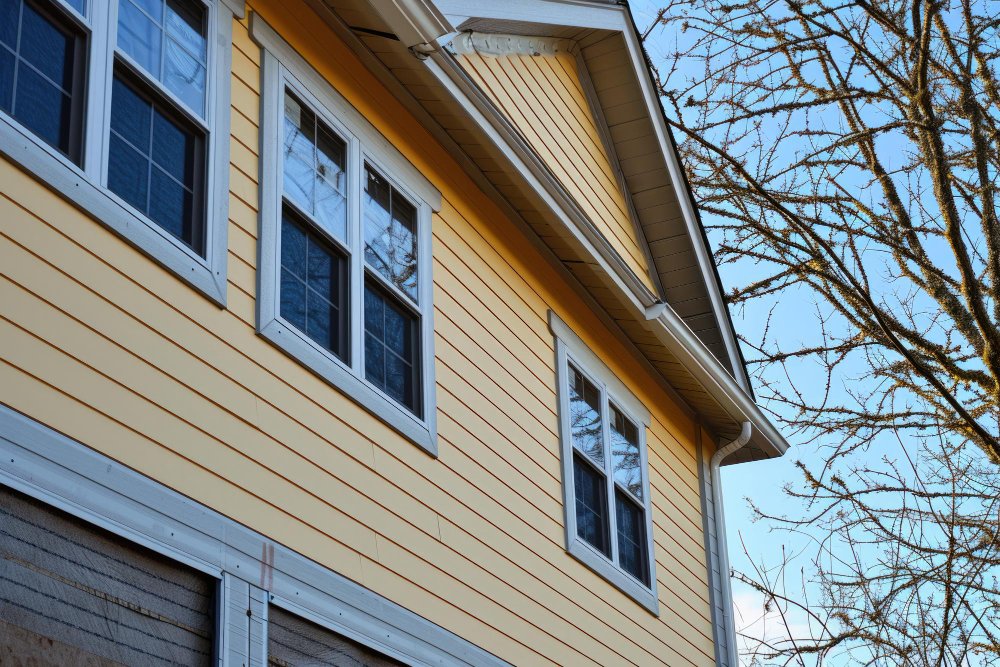When it comes to protecting your home from the elements, siding is your first line of defense. Over time, weather, moisture, and even pests can cause siding to warp, crack, or loosen. But don’t worry—you don’t need to call in the pros for every small fix. With a little know-how and the right tools, you can repair damaged siding yourself and keep your home’s exterior looking great.
In true Bob Vila fashion, this guide will walk you through the step-by-step process of fixing different types of siding, from vinyl to wood and fiber cement. Whether you’re dealing with cracks, gaps, or missing panels, we’ve got you covered!
Step 1: Identify the Type of Siding & Damage
Before you start any repair, you need to know what you’re working with. Common types of siding include: ✔ Vinyl Siding – Durable and low-maintenance, but can crack or warp. ✔ Wood Siding – Offers a classic look but can rot, split, or attract termites. ✔ Fiber Cement Siding – Highly durable but can crack or break under impact. ✔ Aluminum Siding – Resistant to moisture but prone to dents and scratches.
💡 Pro Tip: If you’re unsure about your siding type, check a hidden edge or an extra piece in your garage or attic.


Step 2: Gather Your Tools & Materials
The tools you’ll need depend on the type of repair, but here’s a general list to get started: ✔ Pry bar or siding removal tool (for removing damaged sections) ✔ Replacement siding panels (matched to your home’s exterior) ✔ Hammer & nails (for wood siding) or siding clips (for vinyl and aluminum) ✔ Caulk gun & exterior sealant (for minor cracks and gaps) ✔ Paint & primer (for touch-ups, if necessary) ✔ Utility knife, tape measure, and safety gear
💡 Pro Tip: Always buy extra siding in case of future repairs—matching colors years later can be tricky.
Step 3: Repairing Vinyl Siding
Vinyl siding is one of the easiest to repair. Here’s how to fix a cracked or missing section:
Fixing a Small Crack
- Clean the crack with soap and water, then dry thoroughly.
- Apply a bead of exterior-grade caulk to seal the crack.
- Smooth out the caulk with a putty knife and let it dry.
- Paint over the repaired area with a matching exterior paint if needed.
Replacing a Damaged Vinyl Panel
- Use a siding removal tool or pry bar to unhook the damaged panel.
- Slide the new siding panel into place, ensuring it locks securely.
- Nail it into the pre-drilled slots, leaving room for expansion.
- Snap the upper piece back into place and check for proper alignment.
💡 Pro Tip: Never nail vinyl siding too tightly—it needs room to expand and contract with temperature changes.


Step 4: Fixing Wood Siding
Wood siding requires a bit more attention to detail, but the repair process is manageable:
Patching Small Holes & Cracks
- Scrape away any loose wood or peeling paint.
- Fill holes with exterior wood filler or epoxy putty.
- Sand the area smooth once dry, then repaint to match.
Replacing a Rotted or Broken Board
- Use a circular saw or hand saw to cut out the damaged section.
- Cut a replacement board to size and fit it into place.
- Secure with galvanized nails or screws, sealing edges with caulk.
- Prime and paint to protect against future moisture damage.
💡 Pro Tip: To prevent wood rot, inspect and repaint your siding every few years.
Step 5: Repairing Fiber Cement & Aluminum Siding
Fiber Cement Siding (Hardie Board) Repairs
✔ For small cracks: Use a fiber cement patching compound and sand it smooth. ✔ For large cracks or breaks: Remove the damaged plank, cut a new one, and secure it with galvanized nails. ✔ Finish with a coat of paint to match the existing siding.
Fixing Dents in Aluminum Siding
✔ For minor dents: Try a heat gun and compressed air to pop the dent out. ✔ For deeper dents: Fill with auto-body filler, sand smooth, and repaint.
💡 Pro Tip: If replacing aluminum siding, check if your home’s manufacturer still makes the same color. If not, repainting the entire wall section may be necessary.
Read More in Kitchen Promise Blog
- One-Day Bath Remodel by the Numbers: Costs, Benefits, and Risks
 Is a one-day bath remodel worth it? In this no-nonsense, Mike Holmes–inspired breakdown, we dive into what this rapid renovation really offers. From average costs and time savings to the risks of poor installation and shortcuts, this article covers everything you need to know before choosing a fast-track bathroom upgrade. If you’re weighing efficiency against long-term value, this guide helps you make an informed—and safe—decision.
Is a one-day bath remodel worth it? In this no-nonsense, Mike Holmes–inspired breakdown, we dive into what this rapid renovation really offers. From average costs and time savings to the risks of poor installation and shortcuts, this article covers everything you need to know before choosing a fast-track bathroom upgrade. If you’re weighing efficiency against long-term value, this guide helps you make an informed—and safe—decision. - Luxury White Kitchen Cabinets: 7 Reasons They’re the Smartest Upgrade You’ll Make
 Luxury white kitchen cabinets offer brightness, versatility, and resale power. Chip Gaines-style insights explain why this clean and classic upgrade is worth the investment.
Luxury white kitchen cabinets offer brightness, versatility, and resale power. Chip Gaines-style insights explain why this clean and classic upgrade is worth the investment. - A Sacramento Kitchen Reimagined: Where Beauty Meets Purpose
 A dated Sacramento kitchen becomes a study in purposeful design with graphite gray lowers, arctic white uppers, and waterfall quartz. Jonathan Scott reveals how material restraint creates spaces that feel both timeless and deeply personal.
A dated Sacramento kitchen becomes a study in purposeful design with graphite gray lowers, arctic white uppers, and waterfall quartz. Jonathan Scott reveals how material restraint creates spaces that feel both timeless and deeply personal.
Step 6: Prevent Future Siding Damage
✔ Inspect siding yearly for loose panels, cracks, and water damage. ✔ Keep gutters clean to prevent water from dripping onto the siding. ✔ Trim trees and bushes near the house to avoid scratches and dents. ✔ Pressure wash siding once a year to remove dirt, mildew, and buildup.
💡 Pro Tip: If you live in a harsh climate, consider upgrading to impact-resistant siding for better long-term durability.
Final Thoughts: Keep Your Siding in Great Shape
Fixing siding doesn’t have to be an expensive contractor job. With the right approach, you can tackle small repairs yourself and extend the life of your home’s exterior. Whether it’s a simple caulk job or a panel replacement, following these steps will keep your home looking great and protected for years to come.
✔ Identify the siding material and damage type before starting repairs. ✔ Gather the right tools and replacement materials to ensure a seamless fix. ✔ Follow proper techniques for vinyl, wood, fiber cement, or aluminum siding. ✔ Maintain siding regularly to prevent costly future repairs.
With Bob Vila’s tried-and-true approach, your siding repair project will be efficient, durable, and DIY-friendly. Now, grab your tools and get started!

